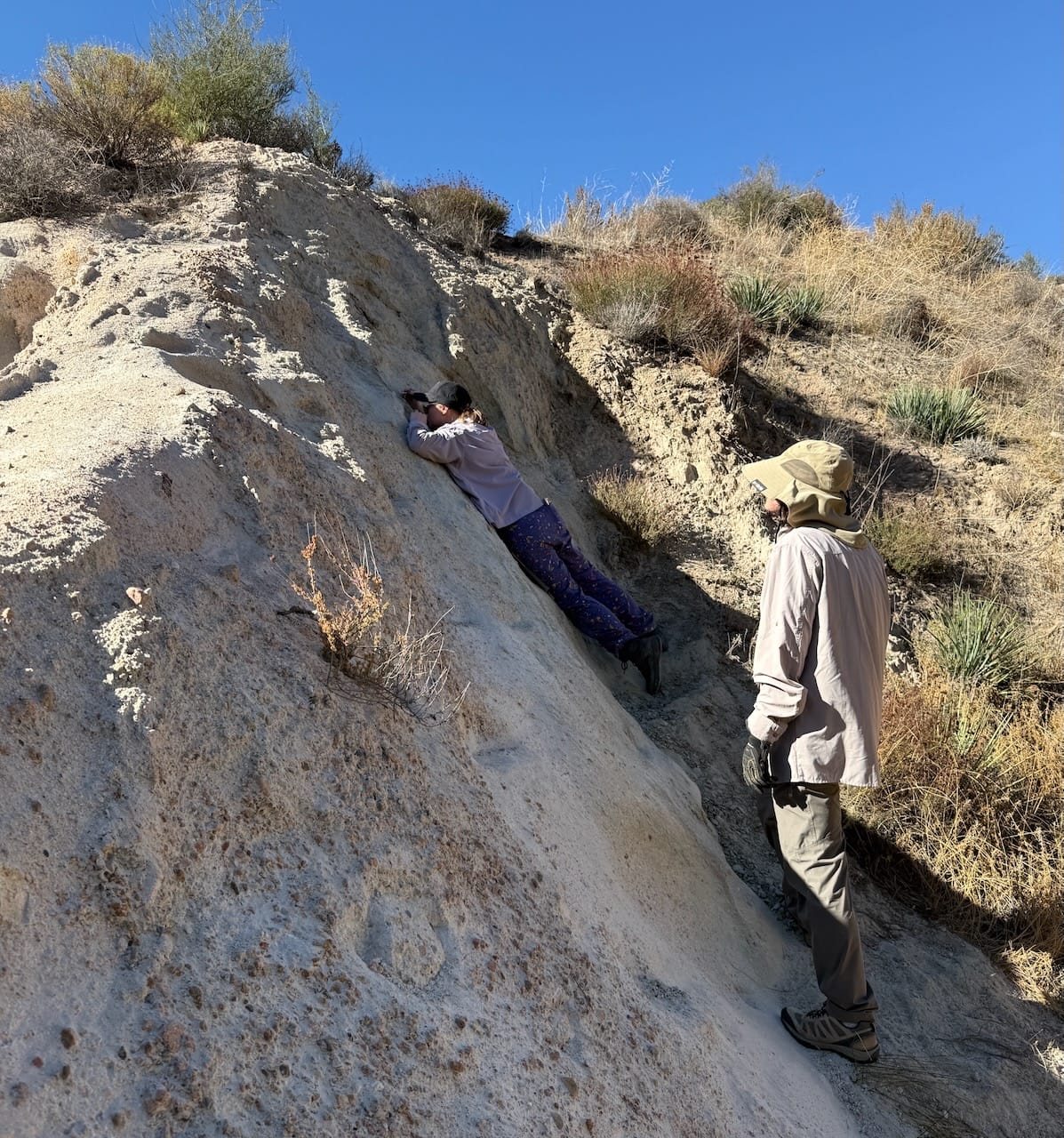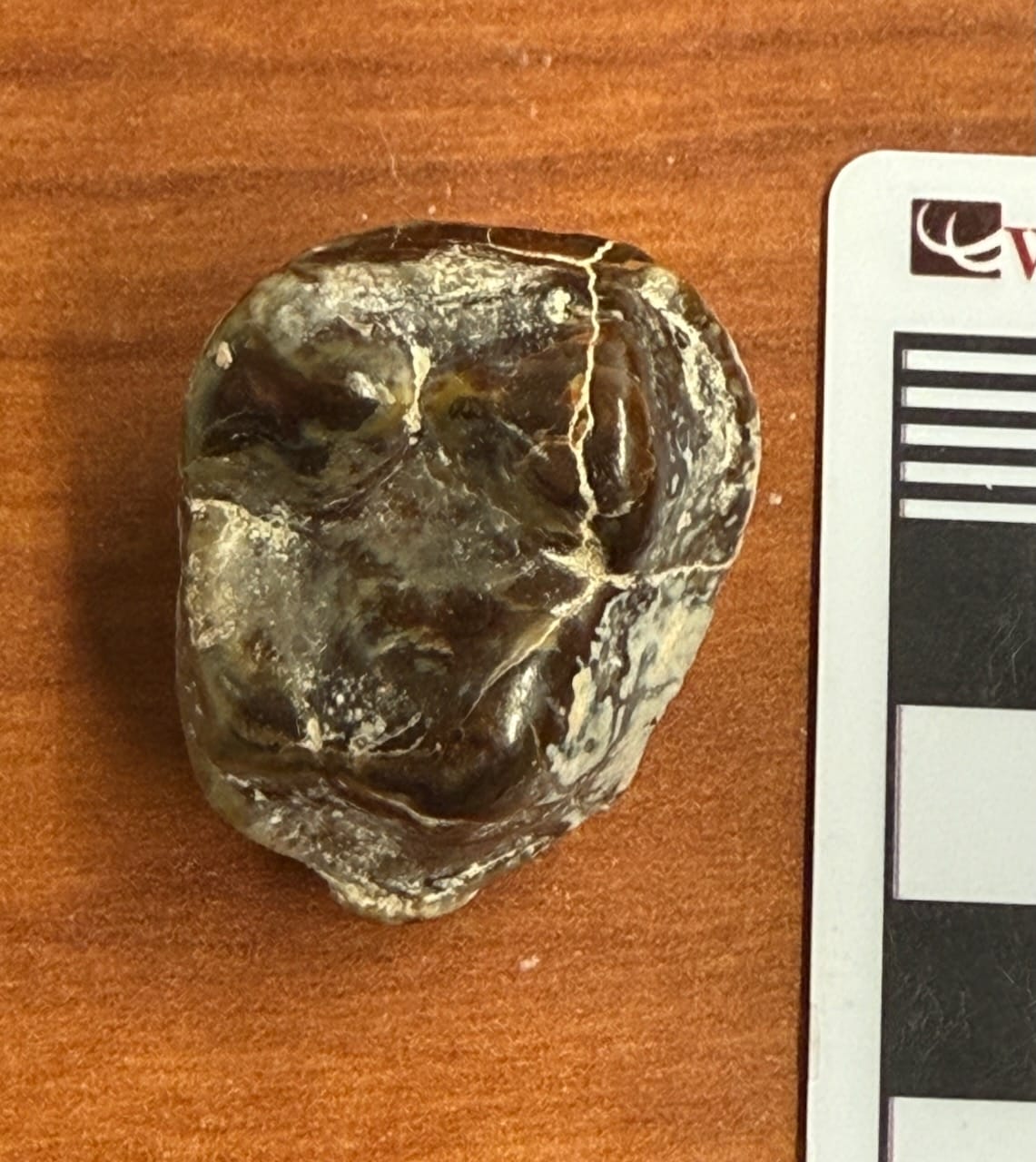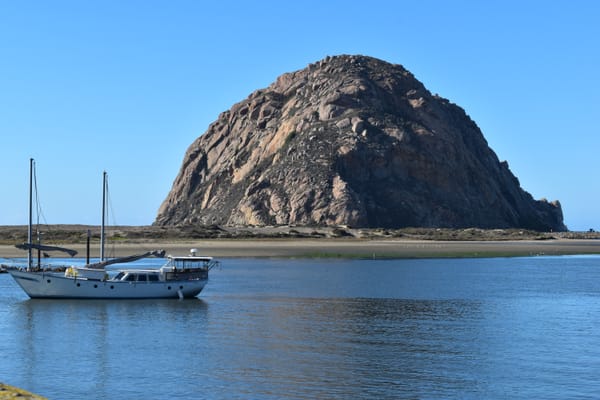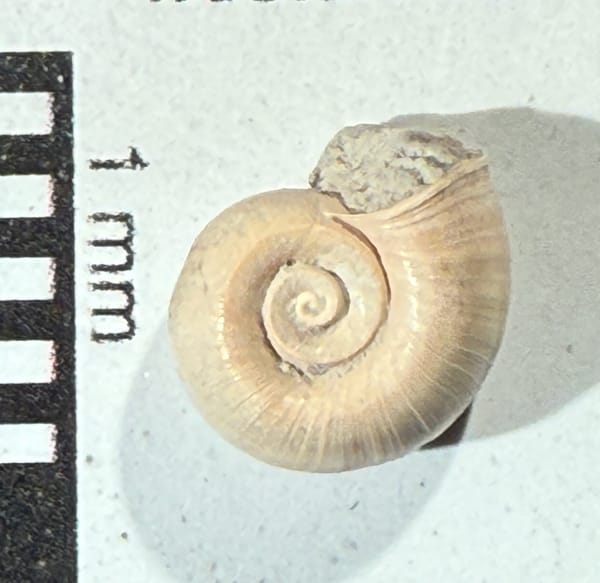New Miocene tooth

Last Monday, several of our staff members visited a fossil locality on National Forest Service land in San Bernardino County that we've been excavating for a number of years under an NFS permit. The deposit exposes a conglomerate of the Cajon Valley Formation, which is middle Miocene in age, around 14-16 million years old. Past excavations at the site by WSC recovered at least three species of fossil horse, which we reported on in a paper a few years ago. But the most intriguing find from this week's trip is the tooth shown below.

I'm pretty certain this is a tooth from a proboscidean, the group that includes elephants and their relatives. More specifically, it appears to be the upper right 2nd premolar. Advanced proboscideans (the elphantoids) replace their teeth horizontally, with the teeth erupting, gradually moving forward along the jaw as they wear down, and eventually falling out of the front of the mouth. The replacement tooth comes in from behind rather than underneath, like it does in most mammals. These means that in an elephant's mouth the teeth move along as if they're on a conveyor belt.
Discounting the tusks, the 2nd premolar is the first tooth to erupt, at an age of about 2 months in African elephants. If this is in fact a 2nd premolar, it was from a very young animal, most likely less than 1 year old when it died.
Two different families of proboscideans are known from North America from this time period (in fact, that had just emigrated from Asia): the mastodons and the gomphotheres. Gomphotheres were initially much more common, but I'm not yet sure which family this tooth represents.
There is also an outside chance the tooth could come from a tapir. Tapir molars actually have a very similar shape to mastodon and gomphothere 2nd premolars, but even when adult tapirs are much smaller. So far the largest tapir teeth I've found references are less than 25 mm long, while this tooth is about 35 mm; awfully large for an adult tapir, but just the size we'd expect for a baby proboscidean.
If this is in fact a gomphothere or a mastodon, it will be the first proboscidean WSC has collected from the Cajon Valley Formation, and possibly the first ever reported from the formation.

If you like what you're reading, please consider becoming a paid subscriber or leaving a tip. All proceeds go to cover the cost of maintaining the site and supporting research and education at the Western Science Center.



